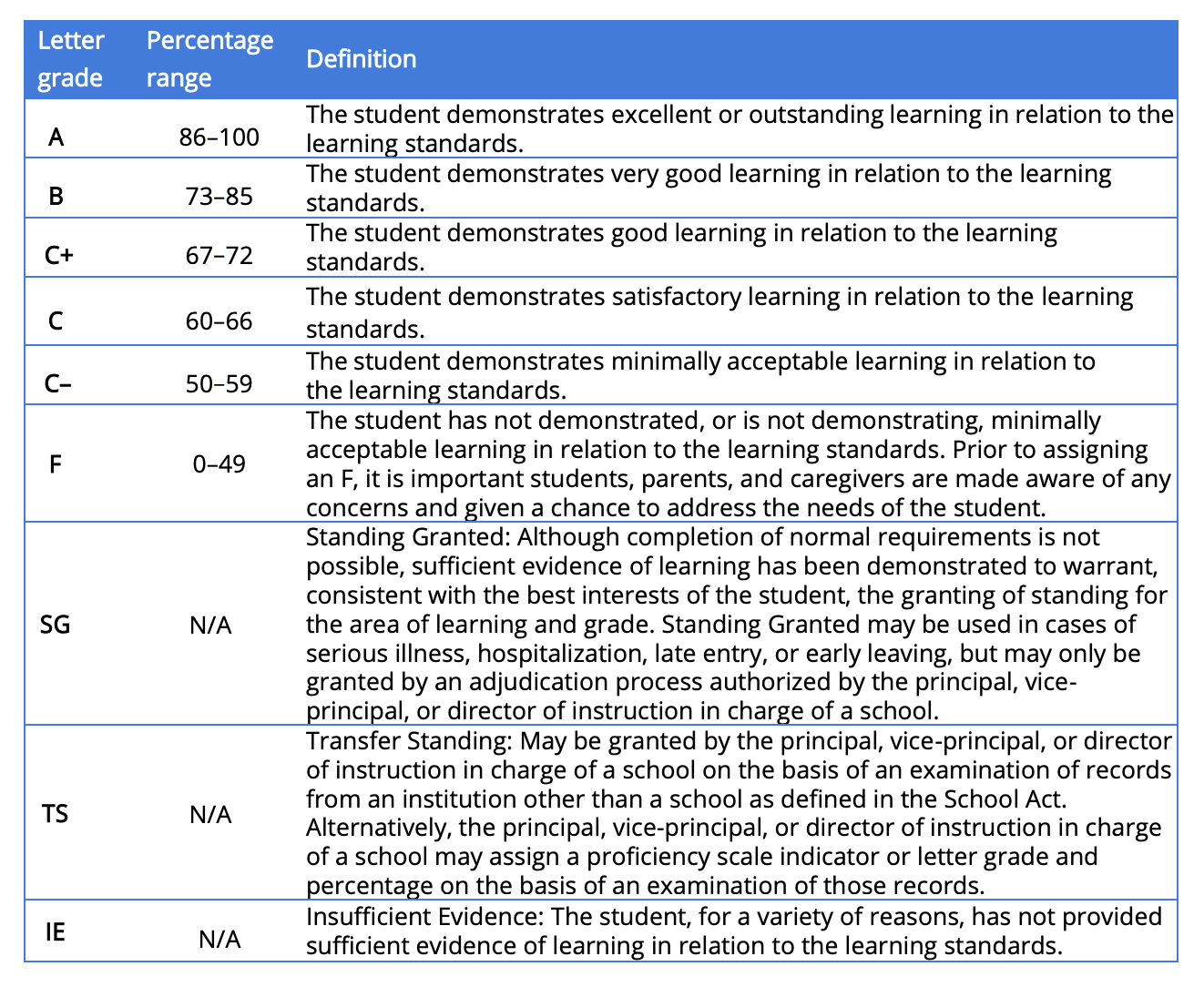Assignment Grading Policy
Flex Academy takes a cumulative approach to learning. Learning demonstrated close to the communication of student learning is the most reflective of student proficiency and is used as the strongest evidence of learning.
The Four-Point Provincial Proficiency Scale
This four-point scale is used to communicate student learning in all areas of learning in Grades K-9, and it is a requirement for student reporting in Grades K-9. The four points on the scale are Emerging, Developing, Proficient, and Extending.
Students come into learning situations with their own experiences and background knowledge. Students do not necessarily begin at Emerging or Developing at the beginning of each school year. Similarly, students do not always reach Proficient at the end of the school year and obtaining Proficient is not the end of learning!
If a student enters a learning experience with Proficient understanding or achieves Proficient during the school year, the aim becomes to dig deeper and reach toward Extending their understanding.
Assessment provides timely feedback to students for continued learning, improvement and growth.
Letter Grades and Percentages
Letter grades and percentages are used in Grades 10-12 to indicate a student’s learning in relation to the learning standards. The process for letter grade symbols and corresponding percentages and definitions are set out in the Provincial Letter Grades Order.
Assignment of an "Insufficient Evidence" Letter Grade
- An "IE" ((Insufficient Evidence) may be assigned at any time during the school year and is not restricted to term and final reports.
- Where an "IE" ((Insufficient Evidence) is assigned, the student and the parent of the student must be informed and have an opportunity to consult with the teacher on the plan of action specified in subsection (3).
- Where an "IE" ((Insufficient Evidence) is assigned, teachers must be prepared to identify what the problem is and specify a plan of action that is intended to help students achieve the curricular competencies.
- An "IE" ((Insufficient Evidence) may be communicated in a variety of ways including a written plan, verbally by telephone, or in a direct meeting involving teacher, parents and students.
- Where an "IE" ((Insufficient Evidence) is assigned, the "IE" letter grade must be converted to another letter grade:
- when letter grades are recorded on the permanent student record card,
- before submission to the ministry for inclusion on that student's transcript of grades, and
- before a student's records are transferred to another school unless there is agreement between the principals of the two schools to defer the conversion of the "IE" letter grade.
[en. M394/94; am. M330/97; am. M33/04]
Insufficient Evidence (IE) is not a final grade. This temporary grade helpsaims to get students, parents, and caregivers work togetherworking with teachers into havinghave willing students demonstrate further evidence of learning to have the student’s mark eventually translated into a proficiency scale indicator or letter grade and percentage.
Successful Completion of Courses in Grades 10, 11 or 12
The successful completion of a course numbered 10, 11 or 12 requires a minimum of a C- grade.
[am M321/04 ; am M199/11]


